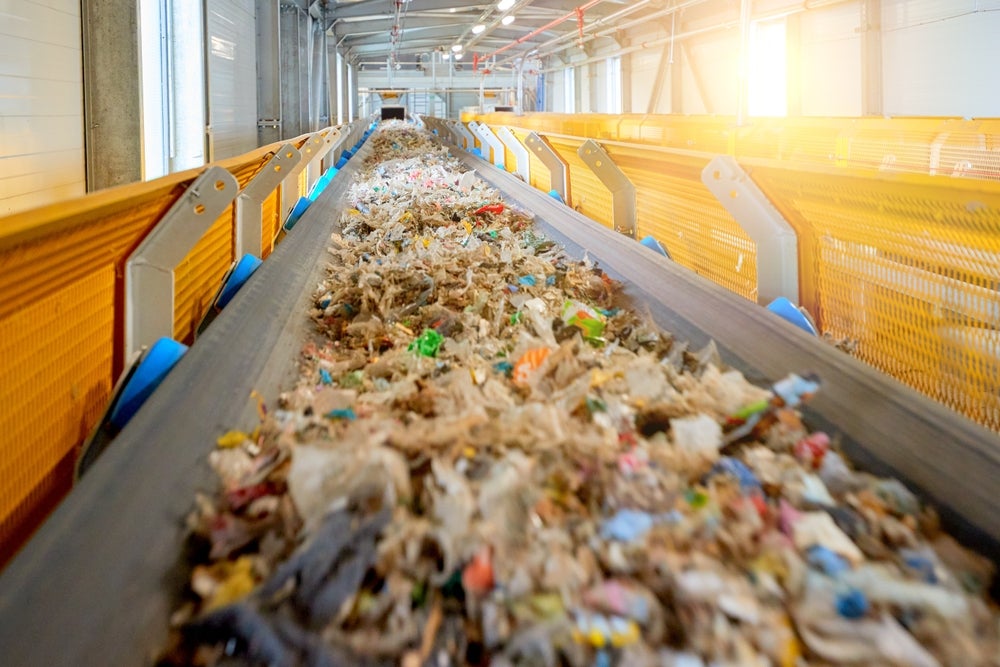To mitigate the impact of consumption of natural resources, technologies such as robotics can help advance the circular economy by reducing waste, improving recycling efficiency, and enabling resource recovery.
They can streamline recycling processes, minimise resource consumption, and enhance material sorting accuracy.
Natural resource use has tripled over the last 50 years and continues to grow at an average rate of about 2.3% every year.
Should the pace of consumption and production continue, resource use will reach 160 billion tonnes by 2060, up 60% from 2020, according to the UN Environment Programme. This will have a severe impact on the environment.
What is a robot and how can it help in advancing the circular economy?
A robot is a machine capable of carrying out a complex series of actions (typically programmed by a computer) automatically and repeatedly. Industrial robots are typically found in factories to automate parts of the manufacturing process. Robots can advance the circular economy by reducing waste, improving recycling efficiency, and enabling resource recovery. They can streamline recycling processes, minimise resource consumption, and enhance material sorting accuracy.
The use of cloud computing and AI enables robots to collaborate and access huge amounts of data uninterruptedly. AI-powered robots can provide insights that improve decision-making. Many materials recovery facilities (MRFs) employ robots to sort their waste.

US Tariffs are shifting - will you react or anticipate?
Don’t let policy changes catch you off guard. Stay proactive with real-time data and expert analysis.
By GlobalDataRobotics plays a crucial role in the circular economy framework’s recycling, repairing, and refurbishing aspects.
Robotics and recycling
Robots have helped to remove one of the key barriers to recycling: sorting. The economics of sorting waste has made recycling more expensive than sending waste to landfills.
Materials that are being recycled are only valuable when they are separated, which is expensive. Most cities have a single-stream approach to recycling, where consumers only sort their waste by recyclable and non-recyclable products, and then the material recovery facilities (MRFs) sort the rest.
These facilities use robotic systems to sort waste. They use AI to identify items, pick objects up with a gripper or vacuum cup, and sort them onto a conveyor system. For instance, in April 2023, Tetra Pak collaborated with Australian Paper Recovery (APR) Kerbside to implement an AI-powered recycling robot to identify, and sort used Tetra Pak beverage cartons at its MRF in Truganina, Victoria.
The more images of different objects in the robot’s database, the greater its productivity. Identifying certain logos is even possible, helping companies understand their recyclability.
Near-infrared sensors can detect certain resins, helping to distinguish between different plastics during sorting. Therefore, robots reduce costs and increase the speed of sorting during recycling. For example, waste specialist Waste Connections partnered with AMP Robotics. It found that the average gripper arm of the robots could make between 2,000 and 4,200 picks per hour, whereas manual labour could only reach 200 picks per hour. The error rate is also reduced to make the recycled material purer and of higher quality. This means it becomes increasingly economically viable to recycle rather than send waste to landfills.
Repairing and refurbishing
Drones, a type of robot, have many applications in the circular economy. Drones can be remotely controlled or fly autonomously through software-controlled flight plans in their embedded systems, working in conjunction with onboard sensors and GPS.
They can help perform maintenance and repair tasks, extending the life of products and infrastructure. The automation and scale offered by drones enable new use cases applicable to the circular economy.
For example, drones can be used to inspect remote infrastructure and report on any damage. Maintenance teams can use the data, thus increasing the lifespan of assets. Drones also offer greater flexibility for transport and logistics. This may improve the sustainability of small-scale deliveries of parts to repair products.









